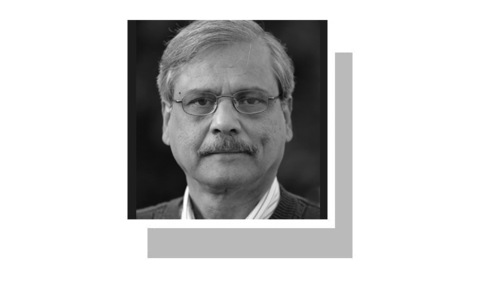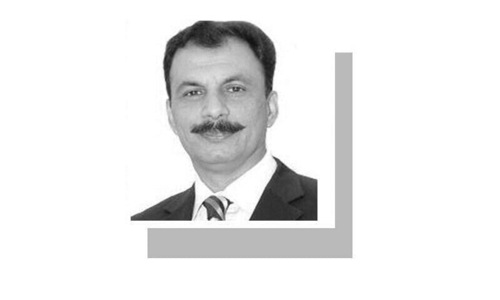WASHINGTON, March 14: Most observers believe that neither Pakistan nor India has so far deployed nuclear warheads mated with delivery systems, says the latest congressional report on nuclear threat in South Asia.
The report by the Congressional Research Service, which provides policy guidelines to US lawmakers, says that India and Pakistan accelerated nuclear weapons development, and possibly, deployments after testing their devices in May 1998. Both countries, however, decided to keep the warheads separate from delivery systems to avoid accidents and theft.
The report points out that there are two basic nuclear risks in South Asia: nuclear material or weapons falling into the hands of terrorists or a miscalculation leading to a preemptive strike and thus to a nuclear war.
The threat of terrorism, the report says, calls primarily for greater physical security at weapons sites and sites where nuclear material is produced or stored, particularly weapons-grade material, such as highly enriched uranium or separated plutonium.
The threat of accidental nuclear war calls for safer nuclear weapons, whereas reducing the risk of preemptive or sudden war would require enhancing command and control and possibly transparency between the two states.
The Congressional Research Service acknowledges that India and Pakistan have been moving towards more structured nuclear command and control authority, organization, and strategic planning. But the report warns that it is not clear if India and Pakistan have implemented the two-man rule, which were used by the United States and Russia during the cold war. Under this rule a concurrent involvement of at least two people is required to fire a weapon. It is also not clear what other procedures have been adopted to prevent unauthorized use, the report adds.
?There is no reliable information on where fissile material is shaped or machined into components for weapons, or where fissile cores are kept if they are separated from other weapon components and delivery systems for India and Pakistan,? the report warns.
Focusing on Pakistan, the CRS points out that some observers believe Islamabad has probably distributed its nuclear weapons in a number of tightly secured facilities at different locations throughout the country.
The CRS notes that in Pakistan physical security is provided by the military. India has kept strong civilian oversight of the weapons programme, with the military kept predominantly at arm?s length. However, the details of security in both cases are unknown.
In April 2000, the Indian government ended independent safety oversight at the Bhabha Atomic Research Centre, the ?nerve centre? of the Indian nuclear weapons programme. Some analysts have interpreted this change as an indication of accelerated nuclear weapons work at BARC, the report says.
The CRS also refers to an Oct 2, 2001 statement by Pakistan?s Foreign Ministry saying, ?Our nuclear assets are 100 per cent secure, under multiple custody.? Media interpreted this as indicating Pakistan had moved nuclear weapons components to several undisclosed locations, the report adds.
The report by the Congressional Research Service, which provides policy guidelines to US lawmakers, says that India and Pakistan accelerated nuclear weapons development, and possibly, deployments after testing their devices in May 1998. Both countries, however, decided to keep the warheads separate from delivery systems to avoid accidents and theft.
The report points out that there are two basic nuclear risks in South Asia: nuclear material or weapons falling into the hands of terrorists or a miscalculation leading to a preemptive strike and thus to a nuclear war.
The threat of terrorism, the report says, calls primarily for greater physical security at weapons sites and sites where nuclear material is produced or stored, particularly weapons-grade material, such as highly enriched uranium or separated plutonium.
The threat of accidental nuclear war calls for safer nuclear weapons, whereas reducing the risk of preemptive or sudden war would require enhancing command and control and possibly transparency between the two states.
The Congressional Research Service acknowledges that India and Pakistan have been moving towards more structured nuclear command and control authority, organization, and strategic planning. But the report warns that it is not clear if India and Pakistan have implemented the two-man rule, which were used by the United States and Russia during the cold war. Under this rule a concurrent involvement of at least two people is required to fire a weapon. It is also not clear what other procedures have been adopted to prevent unauthorized use, the report adds.
?There is no reliable information on where fissile material is shaped or machined into components for weapons, or where fissile cores are kept if they are separated from other weapon components and delivery systems for India and Pakistan,? the report warns.
Focusing on Pakistan, the CRS points out that some observers believe Islamabad has probably distributed its nuclear weapons in a number of tightly secured facilities at different locations throughout the country.
The CRS notes that in Pakistan physical security is provided by the military. India has kept strong civilian oversight of the weapons programme, with the military kept predominantly at arm?s length. However, the details of security in both cases are unknown.
In April 2000, the Indian government ended independent safety oversight at the Bhabha Atomic Research Centre, the ?nerve centre? of the Indian nuclear weapons programme. Some analysts have interpreted this change as an indication of accelerated nuclear weapons work at BARC, the report says.
The CRS also refers to an Oct 2, 2001 statement by Pakistan?s Foreign Ministry saying, ?Our nuclear assets are 100 per cent secure, under multiple custody.? Media interpreted this as indicating Pakistan had moved nuclear weapons components to several undisclosed locations, the report adds.












































Dear visitor, the comments section is undergoing an overhaul and will return soon.